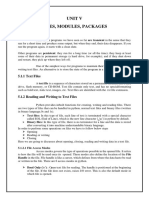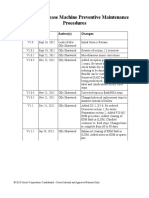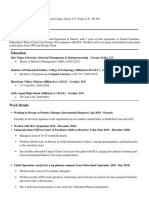0% found this document useful (0 votes)
5 views60 pagesFile Handling - Text Files
The document provides an overview of file handling in computer science, detailing the types of files (text and binary) and their characteristics. It explains various file operations such as opening, reading, writing, and closing files, along with the different modes for file access. Additionally, it includes examples of Python functions for reading and manipulating file content.
Uploaded by
nivedyacvijayan9Copyright
© © All Rights Reserved
We take content rights seriously. If you suspect this is your content, claim it here.
Available Formats
Download as PDF, TXT or read online on Scribd
0% found this document useful (0 votes)
5 views60 pagesFile Handling - Text Files
The document provides an overview of file handling in computer science, detailing the types of files (text and binary) and their characteristics. It explains various file operations such as opening, reading, writing, and closing files, along with the different modes for file access. Additionally, it includes examples of Python functions for reading and manipulating file content.
Uploaded by
nivedyacvijayan9Copyright
© © All Rights Reserved
We take content rights seriously. If you suspect this is your content, claim it here.
Available Formats
Download as PDF, TXT or read online on Scribd
/ 60























































































